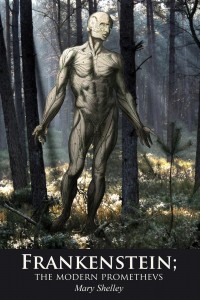Beloved
Character: Beloved
Source Text: Morrison, Toni. Beloved. New York: Random House, 2004. Print. First Vintage International Edition.
Entry Author: Lauren Cyr
Beloved is the daughter of Sethe, a runaway slave woman who suffered terrible abuse at a plantation named Sweet Home. After escaping from Sweet Home, Sethe traveled to her mother-in-law’s house in Cincinnati, eventually settling down to raise her children. However, she is found out by her master, who comes to her house in order to reclaim her and her children. Unwilling to return into a life of slavery, Sethe grabs her children and tries to kill them. The eldest child Beloved, is killed by Sethe, who cut open the child’s neck with a saw. Sethe claims to have been “trying to put my babies where they would be safe.”
After this event, Sethe returns to live in the house where the murder occurred. Although, the house has gained a new addition; the house remains haunted by the spirit of Beloved. The spirit moves objects around the room, flips tables and rattles chairs. Sethe’s two male children, as well as the house dog, are chased out of the house by the spirit. Her presence is destructive, yet tolerated by the members of the house. Beloved’s spirit reminds Sethe’s family of the horrors of slavery, and the need to address their traumatic past.
Once a friend of Sethe’s from Sweet Home shows up in Cincinnati and comes to stay with the house, Beloved’s spirit is apparently chased out of the house. The house goes quiet, and the ghost is believed to have moved on. However, at this point, a young black female is found sitting in front of the house, who calls herself “Beloved.”
Beloved is an animated corpse, or a physical embodiment of the ghost that has been terrorizing the household. Beloved’s physical hybridity takes on a cultural symbolism as well: she gives voice to the horrors of slavery, embodying the unknown collective unconscious voices of former slaves, and relaying their history from the time of the Atlantic passage onwards. She is representative of a past community, and expresses all the tendencies of rage and revenge for those who have died. Sethe is paralyzed by Beloved as the corpse feeds off of her body, emotionally draining Sethe.
The only way Beloved can be gotten rid of is through an act of exorcism by the community. The greatest role the African-American diaspora community has is to seek to heal its members from the traumatic experiences of their past. Therefore, in a climactic experience in the novel, the women of the community gather to perform an exorcism, to force out the demons of the past that have been haunting Sethe. When Ella, a member of the community finds out that the corpse of Beloved has been draining Sethe, she feels incredible outrage. As Ella says, “She didn’t mind a little communication between the two worlds, but this was an invasion” (Morrison 303). The outrage from the community comes from the fact that the past has become a body, physically tormenting Sethe’s life. Therefore it becomes the physical job of the community as a restorative force to begin an exorcism on behalf of Sethe.
About thirty women gather together outside of Sethe’s house and begin to pray and sing. The voices begin to blend together, drawing out Sethe and Beloved. This force of healing is so great that it forces Beloved out of Sethe’s life, exorcising the negative consuming influence of the past. The spirit of Beloved is seen as a necessary reminder of a traumatic past that must be dealt with by the individual; yet, when Beloved’s body changes into a physical being, her presence is too overwhelming and destructive, and must be communally dealt with.



